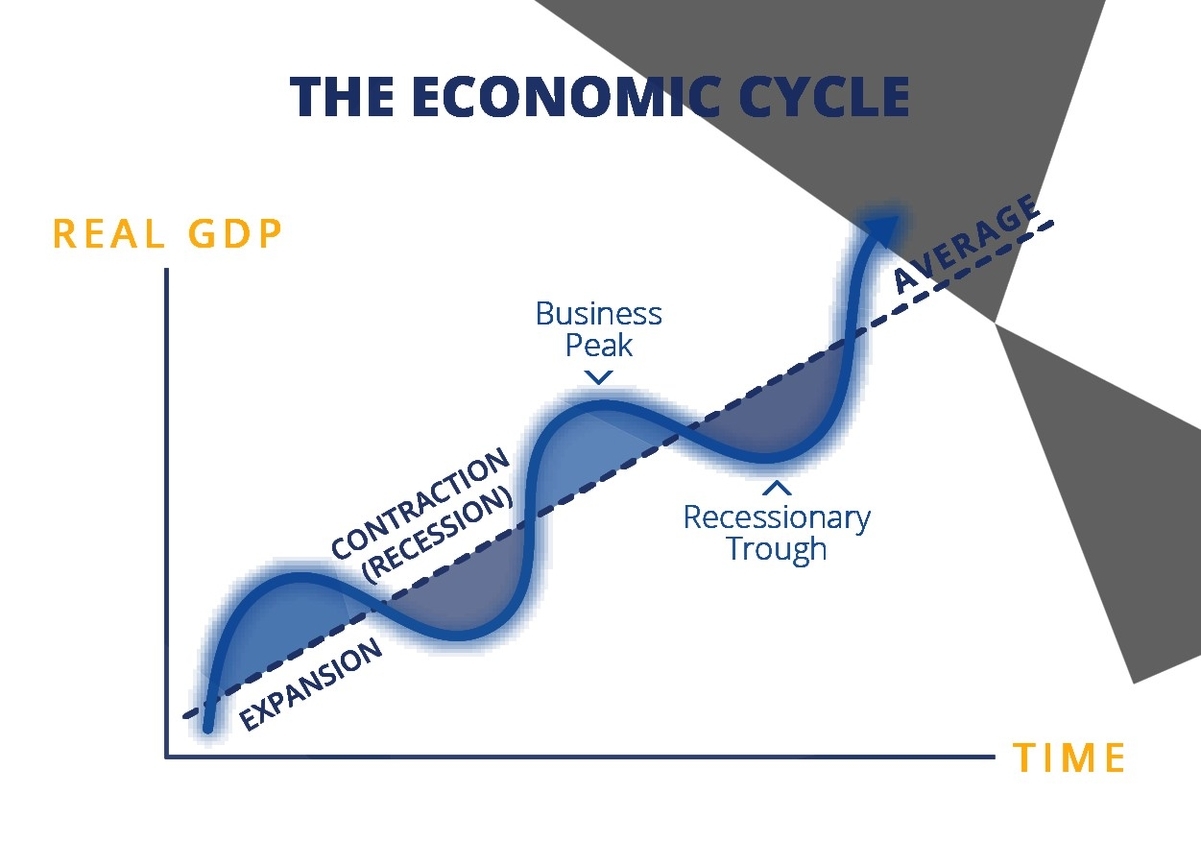
The economic cycle, also known as the business cycle, refers to the fluctuations in economic activity between periods of expansion and contraction. The cycle is characterized by four stages: expansion, peak, contraction, and trough . The current stage of the cycle is determined by factors such as gross domestic product (GDP), interest rates, total employment, and consumer spending . Understanding the economic cycle can help investors and businesses determine when to make investments and when to pull their money out, as each cycle impacts stocks and bonds as well as profits and corporate earnings .
The first stage of the economic cycle is the expansion stage. During this stage, the economy experiences relatively rapid growth, interest rates tend to be low, and production increases. The economic indicators associated with growth, such as employment and wages, corporate profits and output, aggregate demand, and the supply of goods and services, tend to show sustained uptrends through the expansionary stage. The flow of money through the economy remains healthy and the cost of money is cheap. However, the increase in the money supply may spur inflation during the economic growth phase .
The second stage of the economic cycle is the peak stage. The peak of a cycle is when growth hits its maximum rate. Prices and economic indicators may stabilize for a short period before reversing to the downside. Peak growth typically creates some imbalances in the economy that need to be corrected. As a result, businesses may start to reevaluate their budgets and spending when they believe that the economic cycle has reached its peak .
The third stage of the economic cycle is the contraction stage. A correction occurs when growth slows, employment falls, and prices stagnate. As demand decreases, businesses may not immediately adjust production levels, leading to oversaturated markets with surplus supply and a downward movement in prices. If the contraction continues, the recessionary environment may spiral into a depression .
The fourth and final stage of the economic cycle is the trough stage. The trough of the cycle is reached when the economy hits a low point, with supply and demand hitting bottom before recovery. The low point in the cycle represents a painful moment for
